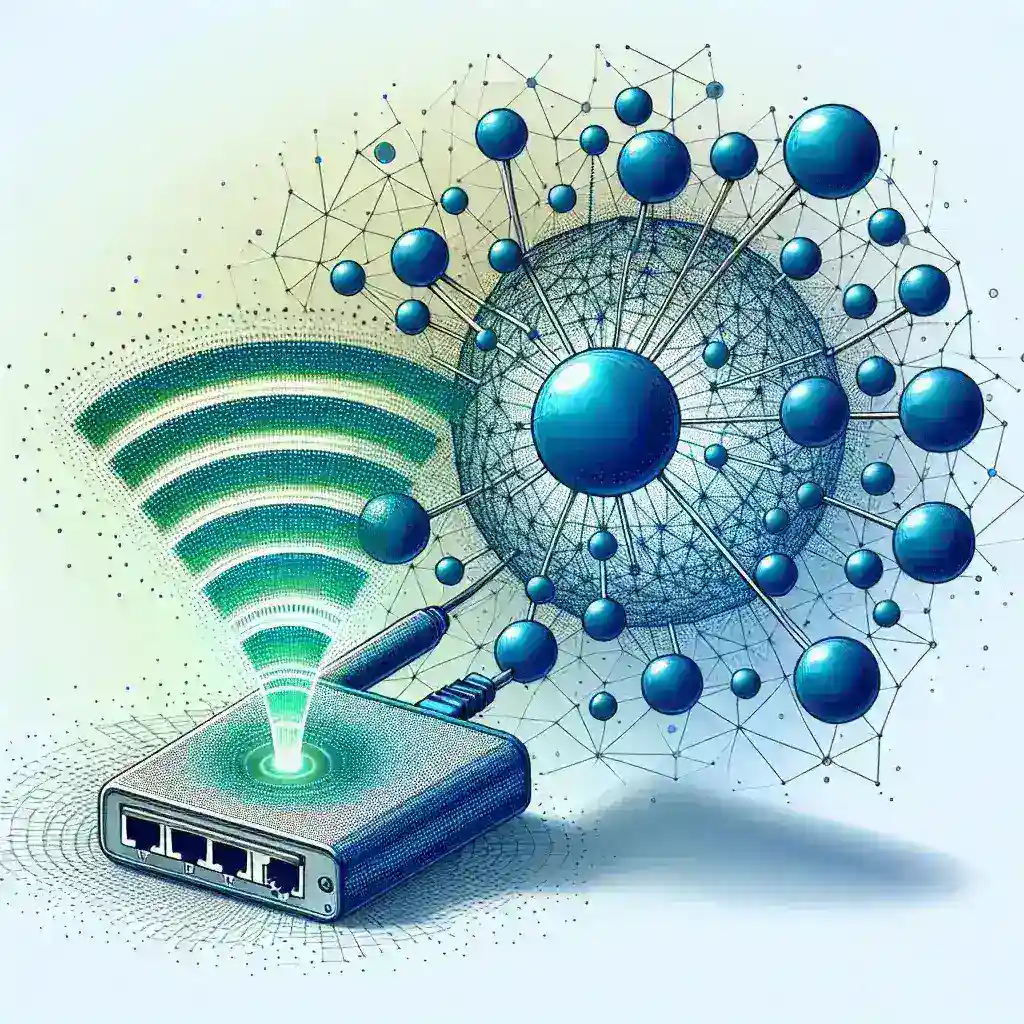In today\’s interconnected world, wireless mesh networks have emerged as a pivotal technology for ensuring seamless, expansive, and resilient connectivity. At the heart of these networks lies a crucial component known as the network adapter. Understanding the role of a network adapter in a wireless mesh network is paramount for anyone keen on optimizing their network\’s performance.
Introduction to Wireless Mesh Networks
A wireless mesh network (WMN) is a complex network structure where multiple nodes communicate with each other to ensure efficient data routing and connectivity. Unlike traditional networks, which rely on a central hub and spoke model, mesh networks are decentralized, allowing for greater flexibility and redundancy.
Key Characteristics of Wireless Mesh Networks
| Characteristic | Description |
|---|---|
| Decentralized Structure | Each node acts as a relay and transmitter. There is no single point of failure. |
| Scalability | Additional nodes can be integrated into the network without compromising performance. |
| Redundancy | If one node fails, the network can reroute data through other nodes. |
| Self-healing | The network can automatically adapt to changes and maintain connectivity. |
Network Adapters: The Backbone of Connectivity
A network adapter, often referred to as a network interface card (NIC), is a hardware component that connects a computer or device to a network. In the context of a wireless mesh network, the adapter plays a multifaceted role in ensuring consistent connectivity, data transmission, and reception.
Core Functions of a Network Adapter in a Wireless Mesh Network
- Establishing Connections: The adapter is responsible for connecting the device to the wireless mesh network, facilitating communication with other nodes.
- Data Transmission: It ensures that data packets are sent and received efficiently across the network.
- Signal Conversion: Adapters convert data signals from digital to analog (and vice versa), enabling seamless communication between devices.
- Authentication and Security: Network adapters play a crucial role in maintaining network security by supporting encryption protocols and authenticating devices.
Advantages of Network Adapters in Wireless Mesh Networks
The integration of network adapters in wireless mesh networks brings numerous benefits:
- Enhanced Connectivity: Adapters ensure uninterrupted connectivity by facilitating smooth data flow between nodes.
- Improved Network Performance: By ensuring efficient data transmission, adapters help in maintaining optimal network performance.
- Flexibility: The decentralized nature of mesh networks, supported by adapters, allows for flexible network expansions and modifications.
- Cost-Effectiveness: Reduced infrastructure costs due to the use of wireless connectivity over traditional wired networks.
Comparison: Network Adapters in Traditional vs. Mesh Networks
| Aspect | Traditional Networks | Wireless Mesh Networks |
|---|---|---|
| Structure | Centralized (Hub-and-Spoke Model) | Decentralized |
| Redundancy | Single Point of Failure | Multiple Pathways |
| Scalability | Limited | High |
| Flexibility | Low | High |
| Cost | High | Lower |
Technical Specifications and Standards
Network adapters must adhere to specific technical standards and specifications to function correctly within a wireless mesh network. Some of these include:
- IEEE 802.11: The set of standards for implementing wireless local area network (WLAN) communication, crucial for ensuring compatibility and performance.
- Frequency Bands: Adapters must support the necessary frequency bands (2.4 GHz, 5 GHz, etc.) to match the network\’s operational requirements.
- Data Rate: The adapter\’s data rate capability should align with the network\’s desired performance levels.
- Range and Sensitivity: High range and sensitivity are essential for maintaining robust connectivity between widely spaced nodes.
Challenges and Considerations
While network adapters are vital to the functioning of wireless mesh networks, several challenges and considerations must be addressed:
- Interference: External electronic devices and physical obstructions can cause signal interference, affecting performance.
- Power Consumption: Wireless adapters in remote nodes must be power-efficient to avoid frequent maintenance.
- Compatibility Issues: Ensuring all network devices and adapters comply with the same standards is crucial for seamless operation.
Future Trends in Network Adapter Technology
As technology advances, network adapters continue to evolve. Some emerging trends include:
- Improved Speed and Efficiency: Advancements in technology will enhance data transmission rates and reduce latency.
- Enhanced Security Protocols: Future adapters will support more robust encryption methods to ensure secure data transmission.
- IoT Integration: Adapters will increasingly support Internet of Things (IoT) devices, allowing for more comprehensive and connected networks.
- Energy Efficiency: Progress in power management will reduce energy consumption, especially in remote or battery-operated nodes.
Conclusion
In summary, the network adapter is a cornerstone of wireless mesh networks, ensuring seamless connectivity, reliable data transmission, and robust network performance. Understanding its role and capabilities allows for better network design and optimization, paving the way for more resilient and versatile networking solutions in the future.

